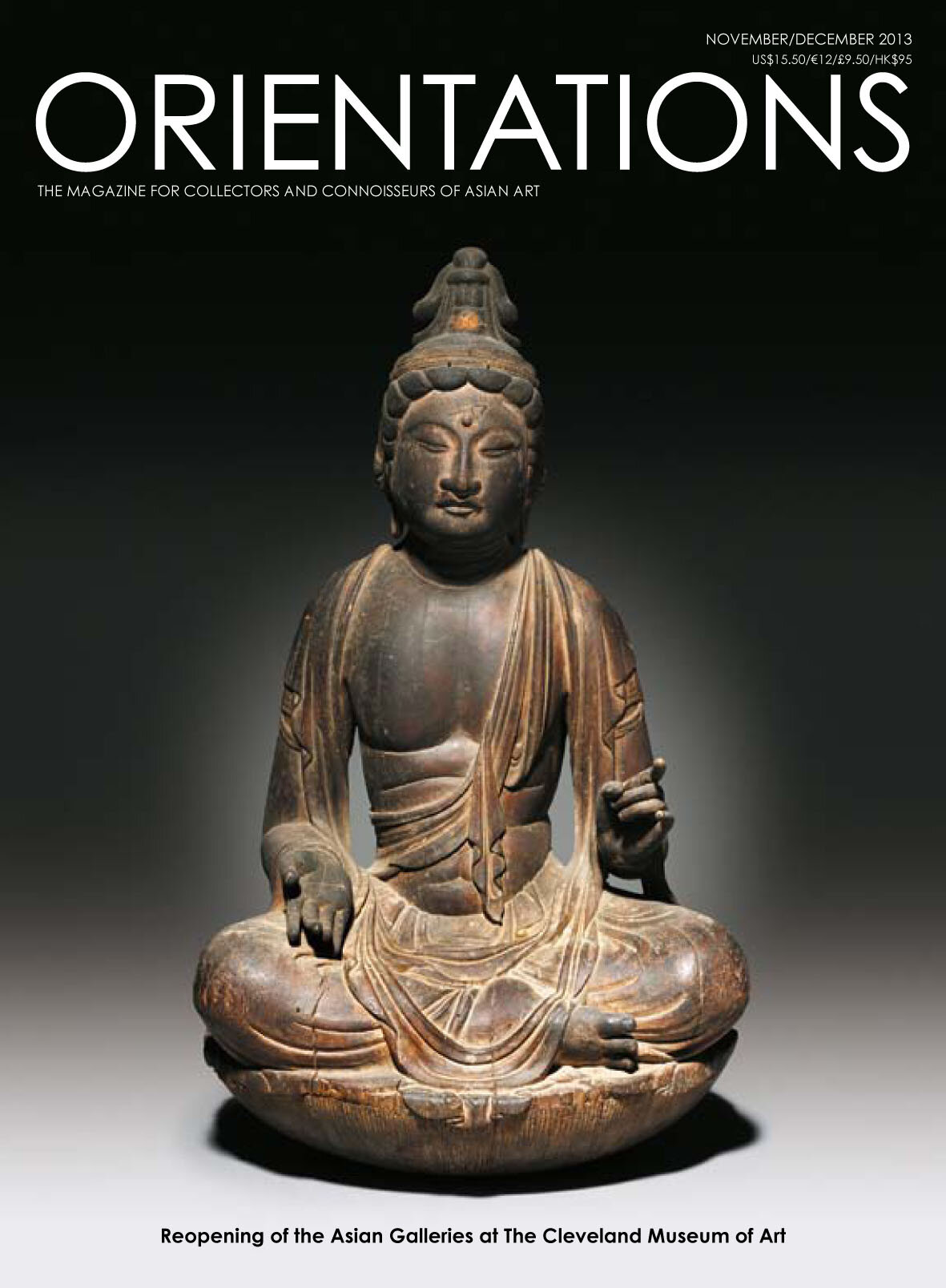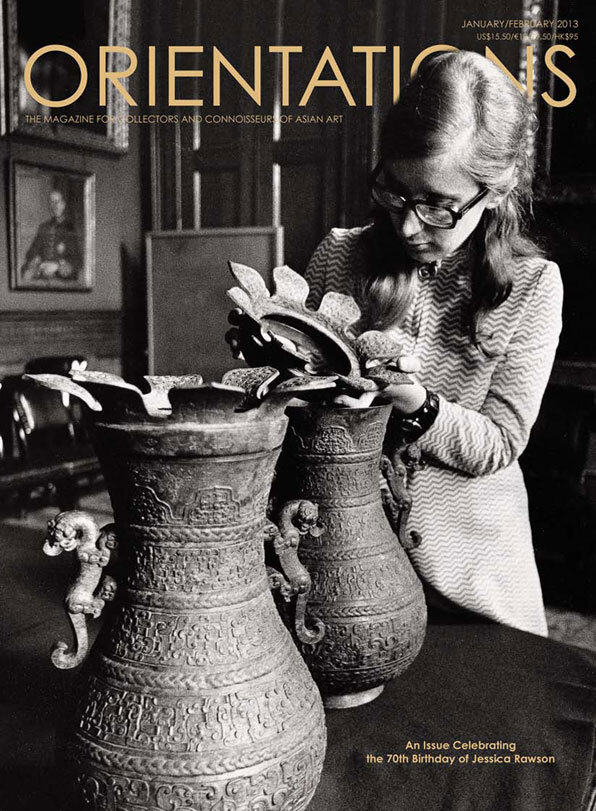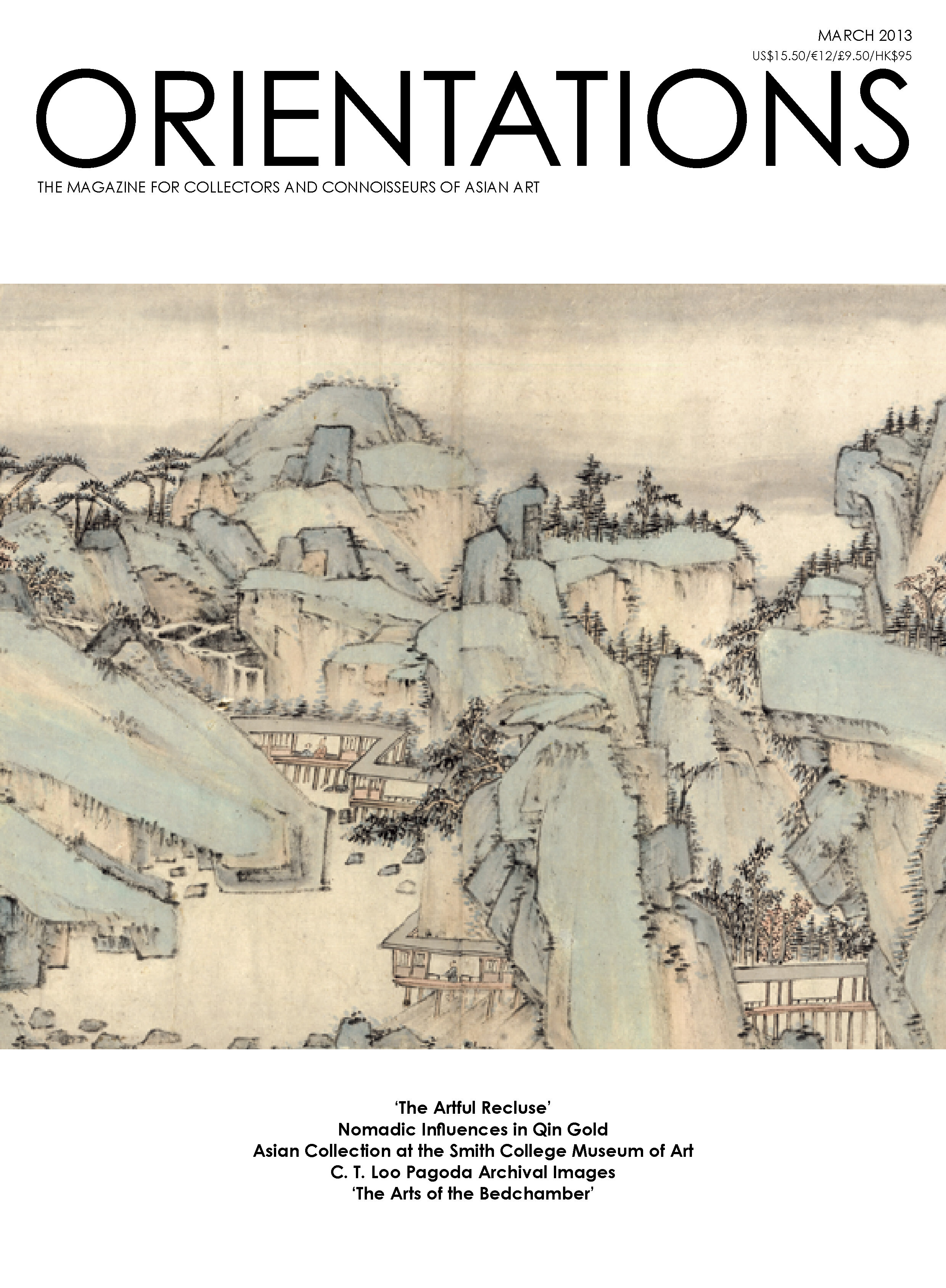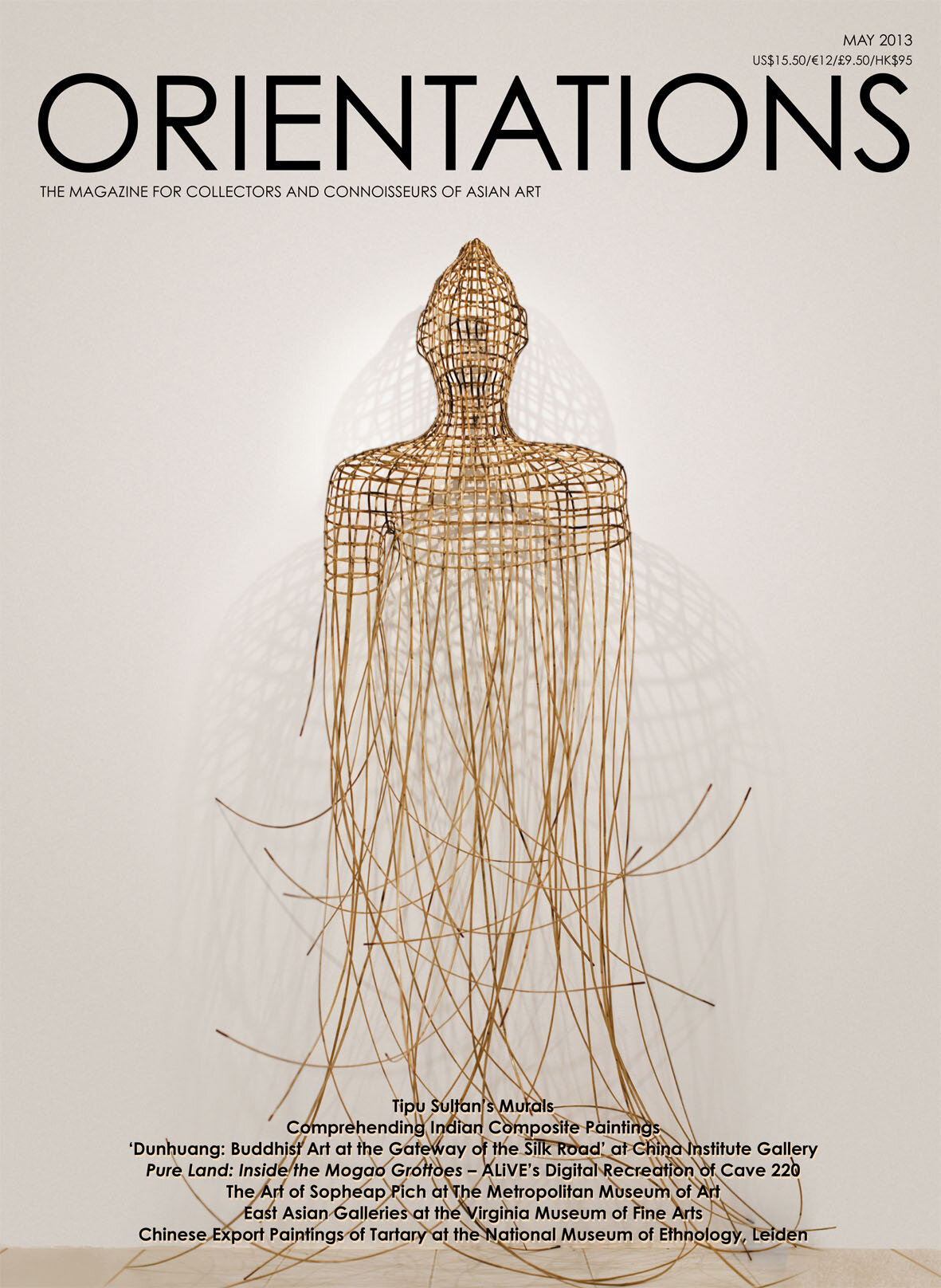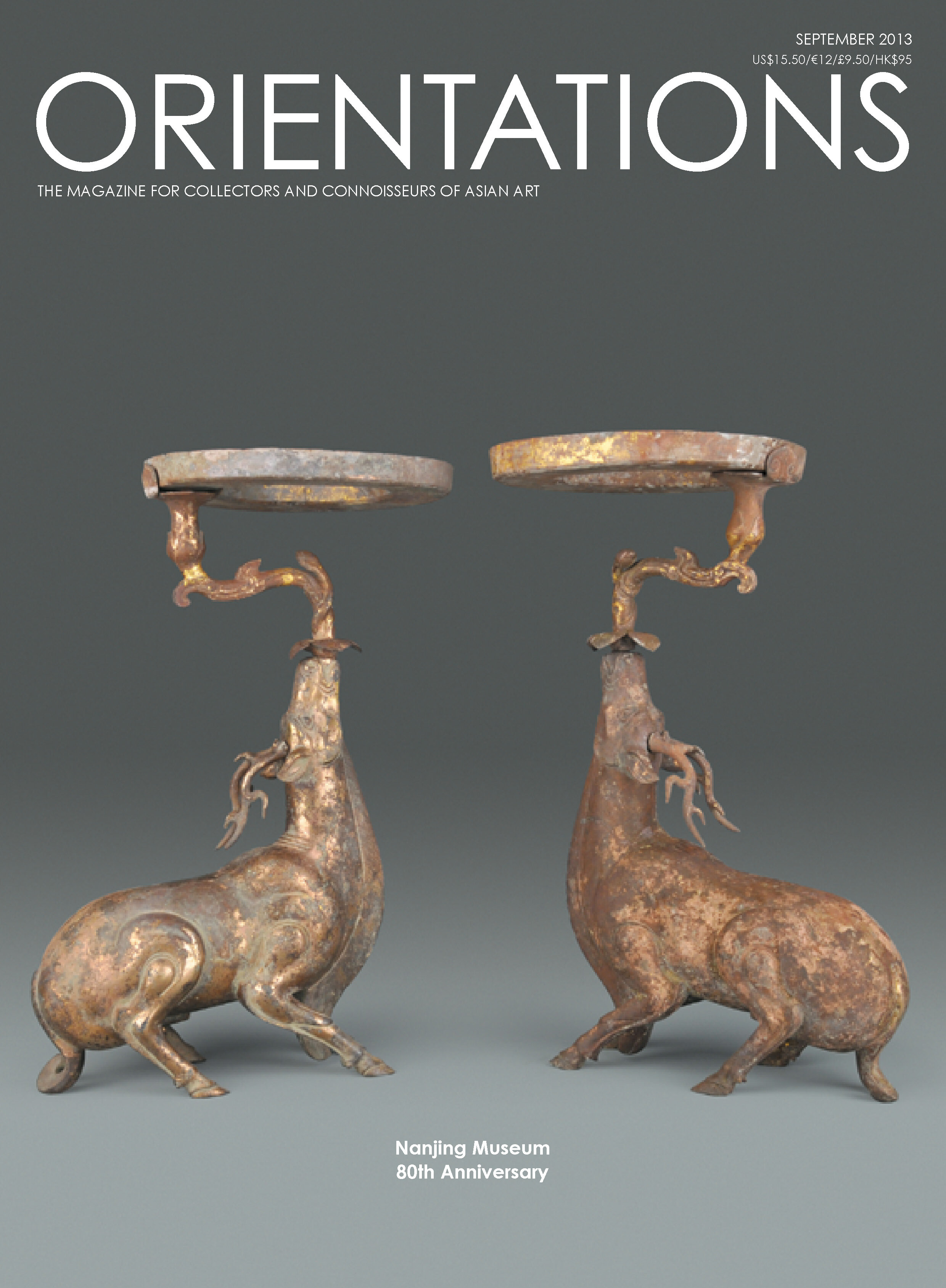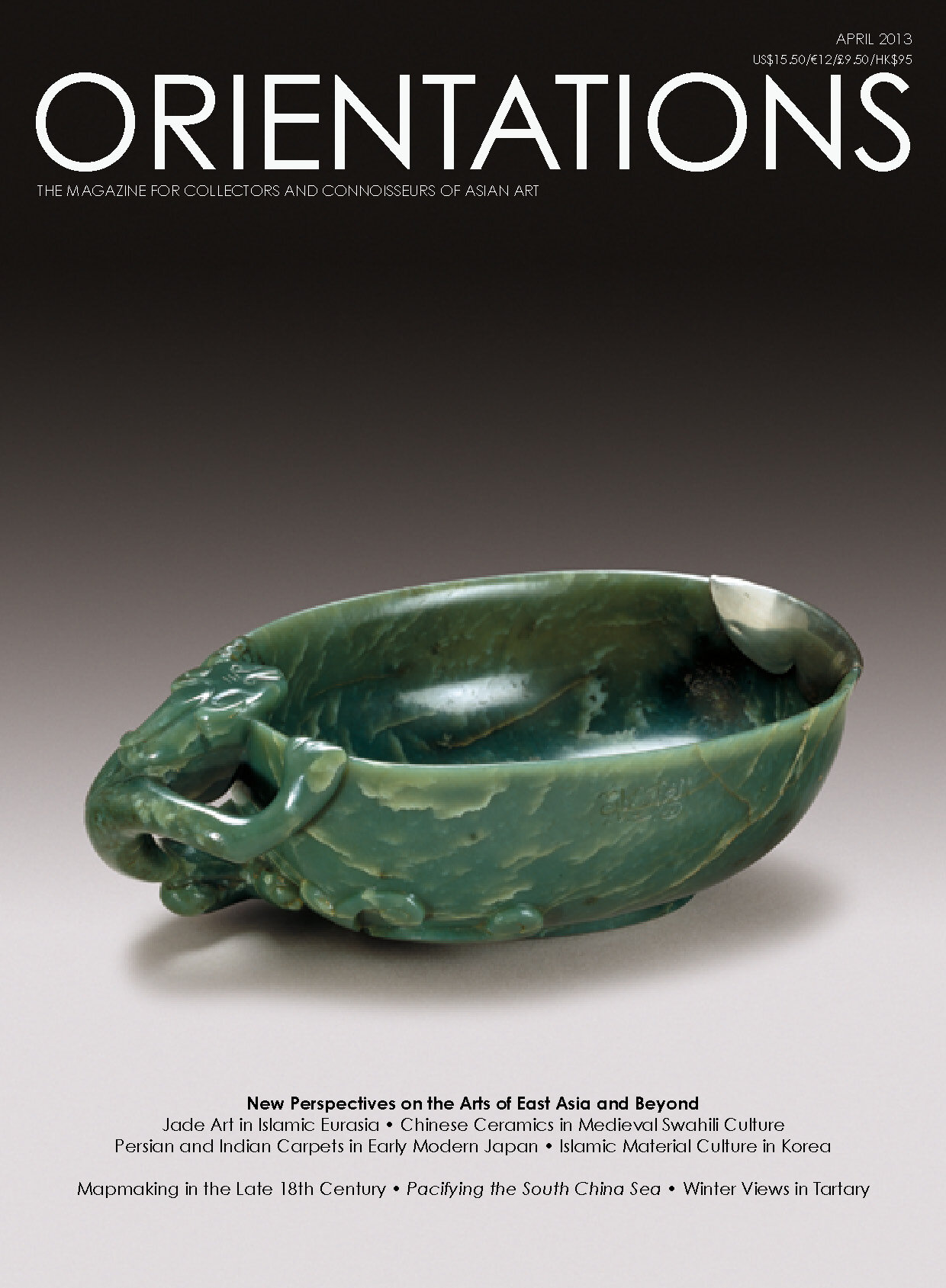 Image 1 of 1
Image 1 of 1


APR 2013
VOLUME 44 - NUMBER 3
While the term globalization carries implications of modernity and 21st century problems, human communities have interacted over long distances for thousands of years. This issue of Orientations focuses on groundbreaking studies of these cross-cultural networks. Yuka Kadoi introduces the topic of historical cultural interaction as it can be understood through extant artefacts. She goes on to assess what can be gleaned from the development of jade works of art from Islamic Eurasia. Yumiko Kamada examines the continued, festive use of Persian, Indian and Deccani carpets brought to Japan by Dutch traders in the 17th and 18th century. In-Sung Kim Han sheds light on the historical influence of Islamic material culture and practice in Korea.
And, concluding this special section, Bing Zhao considers the status assigned to Chinese ceramics in medieval Swahili society. Subsequently, Sarah Kenderdine tells the story of a Qing dynasty scroll – the pride of the recently reopened Hong Kong Maritime Museum – and the cutting-edge processes used to interpret it for modern audiences. Richard Pegg looks at two late 18th century maps of the world, one Chinese and the other British, reflecting on which elements connect them – and which set them apart.
In other features, Nelly Rieuf introduces the restoration of Ladakh’s Matho monastery, which will serve both as a religious focal point and as a museum. Finally, Hong Kong artist Fung Ming Chip discusses whether calligraphy must involve the written word.
FEATURES
Yuka Kadoi. New Perspectives on the Arts of East Asia and Beyond
Yuka Kadoi. Exchanges of Shapes, Exchanges of Materials: Arts of Jade in Islamic Eurasia
Yumiko Kamada. Woven Flowers: Persian and Indian Carpets in Early Modern Japan
In-Sung Kim Han. Objects as History: Islamic Material Culture in Medieval Korea
Bing Zhao. Luxury and Power: The Fascination with Chinese Ceramics in Medieval Swahili Material Culture
Sarah Kenderdine. Pacifying the South China Sea: A Digital Narrative of Annihilation and Appeasement
Richard Pegg. World Views: Late 18th Century Approaches to Mapmaking in China and Britain
Nelly Rieuf. The Matho Museum Project
PREVIEWS & REVIEWS
Patrick Schwemmer. Book Review: Heaven has a face, so does Hell: The Art of the Noh Mask by Stephen E. Marvin
Gretchen Liu. Innovative Spirit: Indonesian Pavilion at Art Stage Singapore
Patrick Schwemmer. Book Review: Heaven has a face, so does Hell: The Art of the Noh Mask by Stephen E. Marvin
COMMENTARY
Fung Ming Chip. Resolving the Debate on Shufa
VOLUME 44 - NUMBER 3
While the term globalization carries implications of modernity and 21st century problems, human communities have interacted over long distances for thousands of years. This issue of Orientations focuses on groundbreaking studies of these cross-cultural networks. Yuka Kadoi introduces the topic of historical cultural interaction as it can be understood through extant artefacts. She goes on to assess what can be gleaned from the development of jade works of art from Islamic Eurasia. Yumiko Kamada examines the continued, festive use of Persian, Indian and Deccani carpets brought to Japan by Dutch traders in the 17th and 18th century. In-Sung Kim Han sheds light on the historical influence of Islamic material culture and practice in Korea.
And, concluding this special section, Bing Zhao considers the status assigned to Chinese ceramics in medieval Swahili society. Subsequently, Sarah Kenderdine tells the story of a Qing dynasty scroll – the pride of the recently reopened Hong Kong Maritime Museum – and the cutting-edge processes used to interpret it for modern audiences. Richard Pegg looks at two late 18th century maps of the world, one Chinese and the other British, reflecting on which elements connect them – and which set them apart.
In other features, Nelly Rieuf introduces the restoration of Ladakh’s Matho monastery, which will serve both as a religious focal point and as a museum. Finally, Hong Kong artist Fung Ming Chip discusses whether calligraphy must involve the written word.
FEATURES
Yuka Kadoi. New Perspectives on the Arts of East Asia and Beyond
Yuka Kadoi. Exchanges of Shapes, Exchanges of Materials: Arts of Jade in Islamic Eurasia
Yumiko Kamada. Woven Flowers: Persian and Indian Carpets in Early Modern Japan
In-Sung Kim Han. Objects as History: Islamic Material Culture in Medieval Korea
Bing Zhao. Luxury and Power: The Fascination with Chinese Ceramics in Medieval Swahili Material Culture
Sarah Kenderdine. Pacifying the South China Sea: A Digital Narrative of Annihilation and Appeasement
Richard Pegg. World Views: Late 18th Century Approaches to Mapmaking in China and Britain
Nelly Rieuf. The Matho Museum Project
PREVIEWS & REVIEWS
Patrick Schwemmer. Book Review: Heaven has a face, so does Hell: The Art of the Noh Mask by Stephen E. Marvin
Gretchen Liu. Innovative Spirit: Indonesian Pavilion at Art Stage Singapore
Patrick Schwemmer. Book Review: Heaven has a face, so does Hell: The Art of the Noh Mask by Stephen E. Marvin
COMMENTARY
Fung Ming Chip. Resolving the Debate on Shufa

